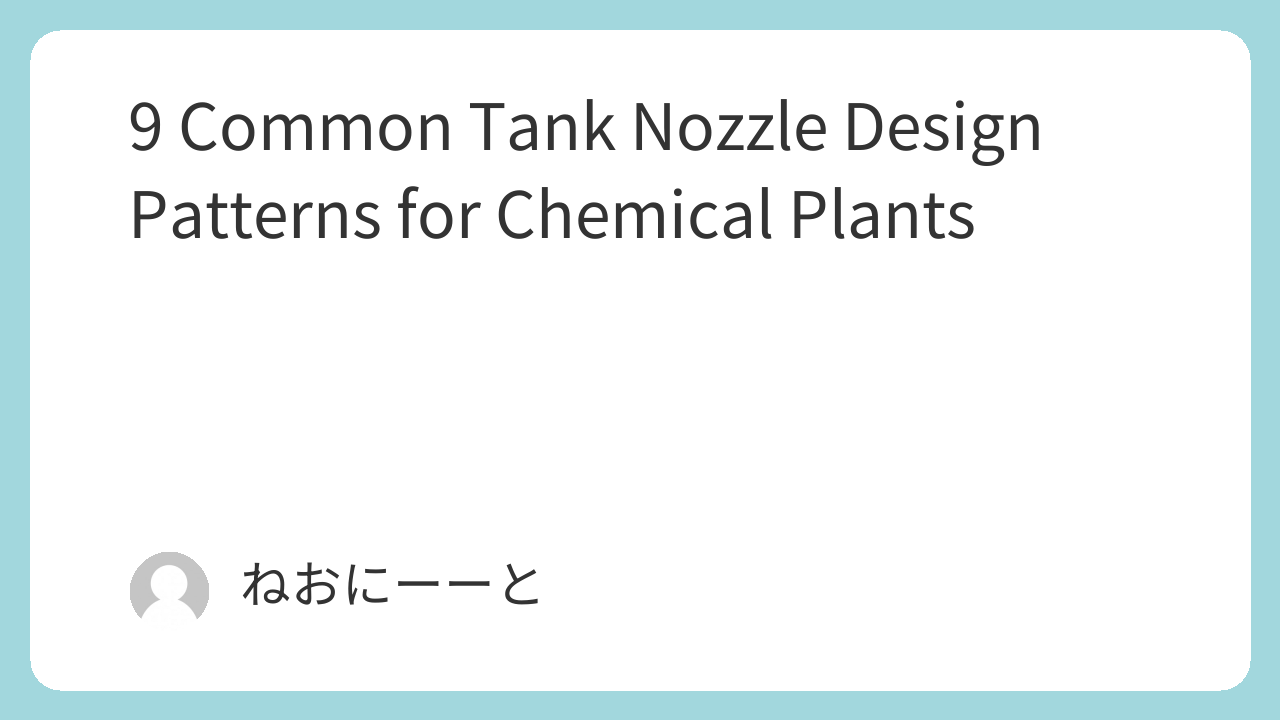Tank nozzles, also known as nozzle connections or pipe stubs, are critical interfaces between tanks and piping systems. While they may look like simple connections, nozzle design plays a major role in safety, operability, and maintainability in chemical plants. Engineers often pay close attention to these seemingly minor details—details that non-specialists rarely notice.
This guide explores nine common tank nozzle configurations, explaining their applications, advantages, and potential risks.
Essential Tank Terminology for Chemical Engineers|Master the Words Used in Real Plant Design
Pressure Testing in Tanks and Piping: Understanding Leak, Hydrostatic, and Water-Filling Tests
Tank Nozzle Orientation: Practical Guidelines for Design and Operation
Designing Tank Manholes: Key Points for Safety and Maintenance Efficiency
Understanding Design Pressure in Chemical Plant Tanks: A Practical Guide
1. Top Nozzles
- Gas Nozzles: Simple stub nozzles with flanges, typically for nitrogen or vent lines.
- Liquid Nozzles (Drop Type): Preferred to prevent liquid film accumulation, reduce fire/explosion risks, and improve cleaning.
2. Insert Pipes (Dip Tubes)
- Used to retrofit drop-type liquid inlets.
- Long dip tubes may vibrate or cause structural issues, requiring reinforcement.
- In some cases, dual concentric dip tubes are used for strength and process stability.
3. Shell (Sidewall) Nozzles
- Common for process connections and instrumentation.
- Require reinforcement to handle piping loads and bending moments.
- May include thermowells or blind flanges with drain prevention.
4. Suction-Type Nozzles
- Installed close to the tank bottom to minimize liquid holdup when a true bottom nozzle is not feasible.
5. Bottom Nozzles
- Simple but critical; may face powder accumulation issues.
- Often combined with pad flanges or piston valves for reliability.
Conclusion
Tank nozzle design is more than a structural detail—it directly impacts plant safety, product quality, and operational reliability. By understanding nozzle types and their proper applications, engineers can minimize risks, simplify maintenance, and ensure efficient plant operation.

Comments